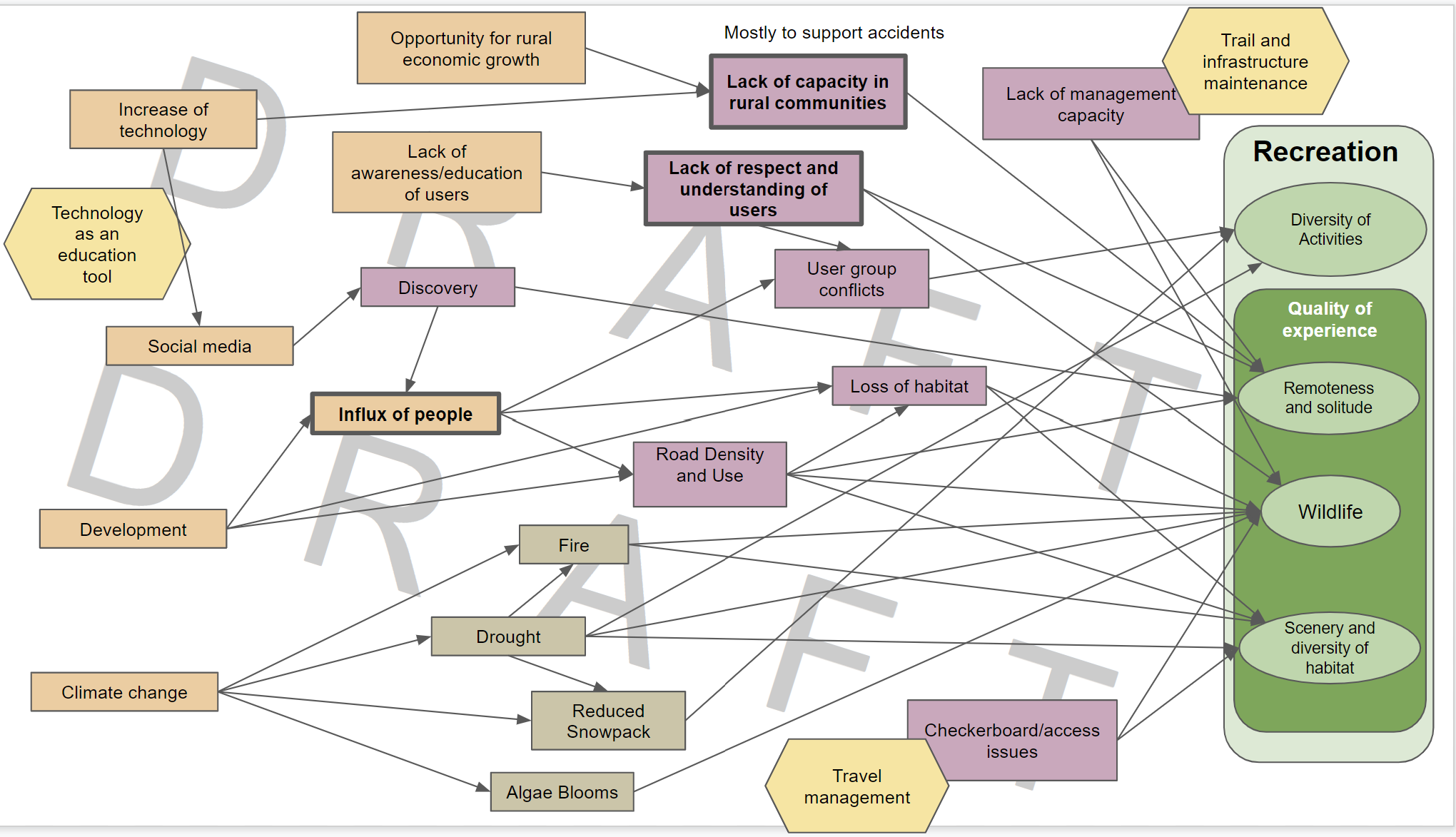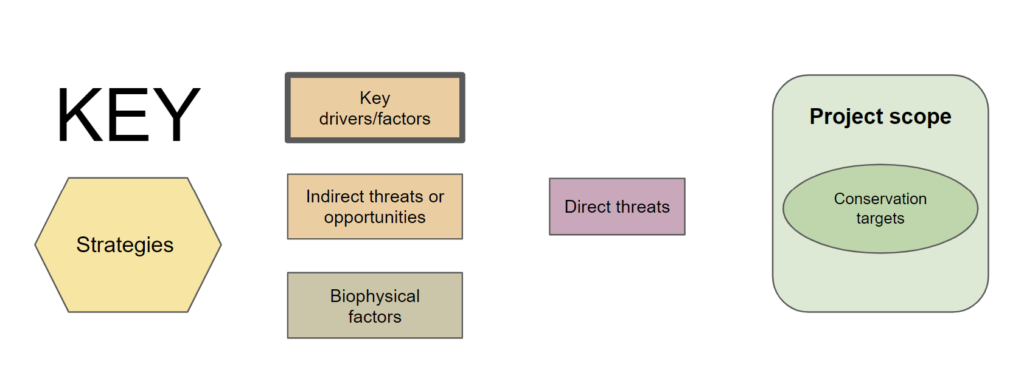Recreation

The High Divide provides an abundance of recreational opportunities, teeming with places for humans to visit. Local and non-local recreationalists activities vary from consumptive (hunting and fishing) to non-consumptive (hiking, rafting); motorized to non-motorized; organized (ski resorts) to dispersed; and benign to extreme. Different types of recreation–and the participants who partake–vary in their economic value and perceived quality of recreational experience across the landscape. Specifically, wildlife qualities (i.e., blue ribbon trophy fish, large ungulates, abundant and diverse birdlife), scenic diversity (snow-capped peaks, rushing rivers, sagebrush seas) and solitude (large wilderness and private fishing holes) are important to those who live and recreate in the High Divide.
Increasing users, climate change, and the difficulty of managing multiple uses on the landscape all threaten the quality of recreational experiences in the region. Biophysical phenomena such as drought and increasing temperatures are vastly altering the landscape: projections of future conditions point to larger and more severe wildfires in the High Divide, river and stream levels are lower and warmer, and species ranges are shrinking and moving up in elevation.
Social contributing factors to recreation quality often originate from outside the High Divide region: the High Divide itself is well-regarded but also experiencing increased recreational spillover from adjacent National Park-dominated areas that have more effective policy options to manage use volumes and crowding. Likewise, social media is now making recreation more and more accessible to visitors. Another threat to high-quality recreation opportunities in the High Divide relate to the legacy of management (i.e., checkerboard ownership) and the lack of adequate resources for public land managers (e.g., road maintenance) and local officials (e.g., search and rescue). Coupled with increased use, this resource deficiency is leading to environmental degradation and dispersed use and overuse and law enforcement issues.
Photo: Josh Willink | Pexels
Draft Conceptual Model

